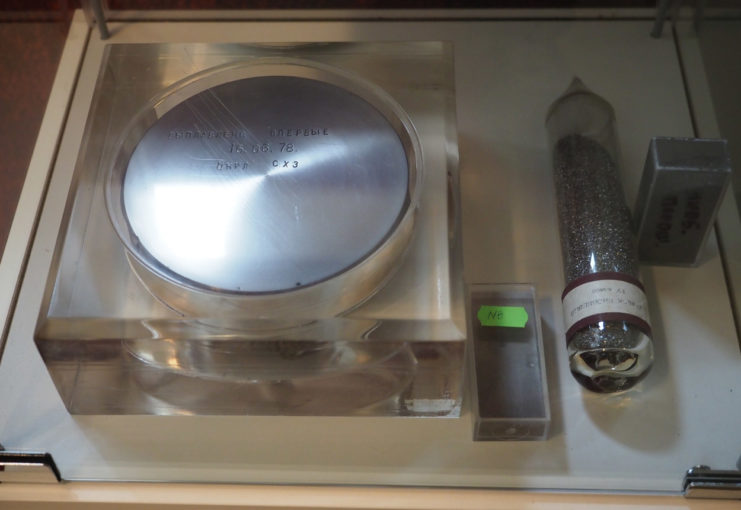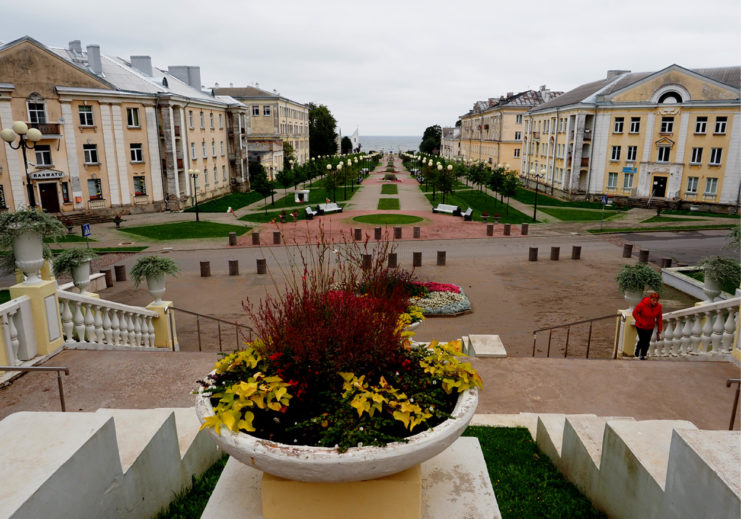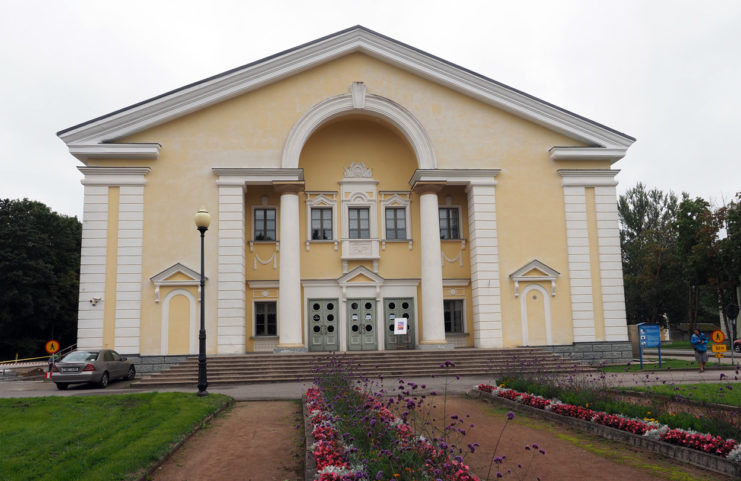A town in Estonia was removed from all Soviet maps during the Cold War but is now a popular resort destination on the Baltic coast.
Sillamae, located around 100 miles from the capital of Tallinn was often redacted from Soviet maps due to it having a uranium processing plant on the eastern edge of the town. It was uranium mined from this area that was used in the very first Soviet-made nuclear bomb. The Dictyonema shale found in the area contained minute quantities of the rare mineral. And a huge factory was built to process and enrich the material.

In order to expand the project a huge town was built around the former small village that existed before the builders and over 12,000 workers moved in during the 1940s to late 1940s.
Built during the Stalinist times the large apartment buildings have many Soviet-style elements in them but mainly feature neoclassical architecture very different from the conventional Communist design of that period.
The center of the town features a wide boulevard with accommodation blocks and shops leading down to the sea.

Other features found around the town include what looks like an Estonian Lutheran church. Who’s steeple was used by the security forces to provide an observation post from what is the highest point in the town.

No one could enter or leave the town without the correct papers or permission.
In the 1920s oil shale was found nearby and a plant was built to process and extract the oil.
The plant was used during Nazi occupation and was then rebuilt by the Soviets after it was demolished by the retreating Germans just before Russian forces took the area back towards the end of World War II.
With the war in Japan and the nuclear bombs triggering its surrender, the Soviet rulers wanted to join the nuclear club and planned to build their own weapons. Identifying the uranium in the area they set about constructing an industrial town to produce the materials needed for the project.
The town was built to supply workers’ accommodation and many experts were brought in from all over the Soviet empire. Slave labor and prisoners of war were also used.
Although many workers, technicians, and engineers were specialists in this scientific and manufacturing field and found an almost idyllic place to live and work. Arriving from thousands of miles away to a coastal town with brand new housing and shops stocked with food would have been a dream for most of them.

Called the Kombinat No7 Plant the factory was enriching the uranium being mined from the cliffs.
Wastage was huge with around only 0.1% of the material being mined turned into usable uranium. Figures suggest that over a 5 year period 250,000 tonnes of shale produced just 20 tonnes of uranium.
The plant was still being used to process uranium up until the 1990s although the local shale was ceased to be used in the early 1950s. Ore was then brought into the plant from Eastern Block countries such as Romania, Poland, and Czechoslovakia.
Sillamae’s plant is thought to have provided the uranium for some 70,000 Soviet nuclear weapons. Around 100,000 tonnes of uranium of which 1,300 tonnes were enriched uranium passed through the plant.
In terms of a place to live and work the town offered a coastal lifestyle with arts and culture at the town’s theater and a seaside promenade.

The security in and surrounding the town lasted for many years and as the Soviet Union started to collapse in the 1990s the town started to open and even showed up on maps.
Mainly still Russian speakers in the town; the population is around 14,000 today.

Other environmental work was started in the late 1990s to protect the pollution of the Baltic Sea from the huge mound of toxic waste that had built up over the years.
Waterproof barriers and many layers of earth were placed over the semi-liquid waste to reduce the radiation levels to a more natural level.
Today the factory is now under the control of the American mining company Molycorp; it was privatized in 1997. The Sillamae plant now processes rare earth metals.
Molycorp purchased the company for $89 million and it doubled its ability to produce rare earth metals. The company is a world leader in this sector along with China.
